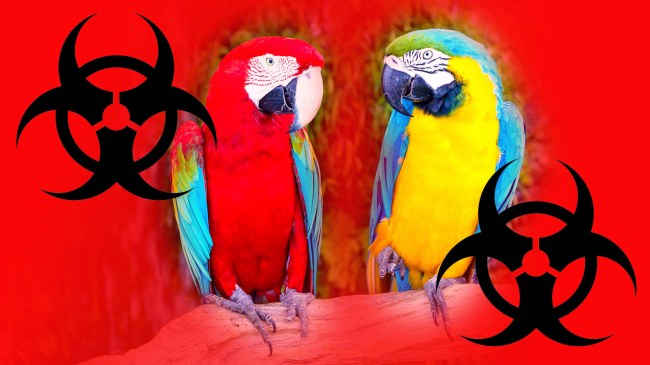iStockphoto
A deadly disease named parrot fever is infecting and killing people in Europe with five dying since November of 2023.
So, in addition to new concerns about severe flesh-eating infections, bubonic plague, a “zombie virus,” and a new mystery fungi, we now have parrot fever to worry about.
Parrot fever, known as psittacosis in medical terms, is a respiratory infection caused by the bacteria Chlamydophila psittaci.
This bacteria is present in 450 species of birds as well as numerous animals, including dogs, cats, horses, large and small ruminants (sheep, goats, cattle, etc.), swine, and reptiles.
The spread of parrot fever has caught the attention of the World Health Organization (WHO), who recently explained, “In February 2024, Austria, Denmark, Germany, Sweden and The Netherlands reported an increase in psittacosis cases observed in 2023 and at the beginning of 2024, particularly marked since November-December 2023. Five deaths were also reported. Exposure to wild and/or domestic birds was reported in most of the cases.”
The WHO continued, “Human infections occur mainly through contact with secretions from infected birds and are mostly associated with those who work with pet birds, poultry workers, veterinarians, pet bird owners, and gardeners in areas where C. psittaci is epizootic in the native bird population.”
So far there has been 14 confirmed cases of parrot fever in Austria in 2023 and four in 2024. The median number of cases per year in the previous eight years was two.
In Denmark, 23 people have tested positive for parrot fever. Seventeen of those people were hospitalized, 15 of them contracted pneumonia and four of them died.
Germany had 14 confirmed cases in 2023 and in 2024, as of February 20, there were another five cases. 16 of those total 19 people were forced to be hospitalized.
Sweden had seven cases reported in November 2023 and 19 cases reported in December 2023. In 2024, there have been another ten cases were reported in January and three in February.
And in the Netherlands, 21 people have tested positive for parrot fever since late December 2023. All of the individuals were hospitalized and one of them died.
So close to 100 people in total have contracted parrot fever in those five European countries over the past few months.
So how does one contract parrot fever? People who work with or own pet birds, poultry workers, veterinarians, pet bird owners, and gardeners are the most likely to be exposed to Chlamydophila psittaci.
The disease is transmitted to humans mostly through inhalation of airborne particles from respiratory secretions, dried feces, or feather dust.
Symptoms including fever and chills, headache, muscle aches and dry cough, and if promptly treated with antibiotics will resolve itself without any complications.
The World Health Organization currently assesses the risk posed by parrot fever as low, but has made several recommendations to help slow the spread of the disease.

